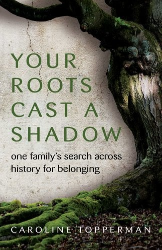The Rothschild family is so well-known that its name is virtually a metonym for wealth. However, the many talents of its women have been largely overlooked — until now. Natalie Livingston, author of an earlier book about scandal, power, and intrigue in an English stately home, has found an abundance of fascinating stories about Rothschild women across seven generations.
Their history begins in 1753, when a daughter named Gutle was born in the Frankfurt ghetto to Bella Gans and Wolf Salomon Schnapper. Their business was banking; and despite all the legal and social limitations imposed on women at the time, Gutle mastered it and soon oversaw its counting house. In 1770, her father introduced her to a religious boy who had also worked in a bank: Mayer Amschel Rothschild. They married later that year.
It took just two generations until Rothschild women had moved from the ghetto to the highest echelons of British society. In 1838, Benjamin Disraeli, a rising politician, took an interest in Gutle’s granddaughter, Charlotte de Rothschild. Over time she became his close confidant. A few years later she was introduced to Queen Victoria, who had ascended to the throne at the age of eighteen and needed a young friend.
Charlotte’s mother-in-law, Hannah Rothschild, became active in British electoral politics when the editor of The Times invited her son Lionel — Charlotte’s husband — to stand for election to Parliament in 1847. He became the first Jew to serve in the House of Commons. By 1885, when Charlotte’s son, Nathan Mayer de Rothschild, sat in the House of Lords as the first Lord Rothschild, his cousin Constance was a regular visitor at Windsor Castle. She would see her friend Princess Louise, the eccentric third child of Queen Victoria. The Queen, in turn, visited Constance and her husband at their Buckinghamshire estate, Waddesdon Manor.
The Rothschild women of the twentieth century are particularly striking. Rózsika von Wertheimstein, who married Charles Rothschild, not only won a women’s tennis championship, but she also spoke four languages and was a political enthusiast as well as an advocate of Zionism. She gave birth to two extraordinary daughters. One of them, Nica, became deeply involved with some of New York’s greatest jazz musicians: Coleman Hawkins, Bud Powell, Charlie Parker, and, in particular, Thelonious Monk.
Rózsika’s daughter Miriam, the most inspiring of the remarkable women described in this book, excelled in multiple ways. During the Second World War she led efforts to support and rescue Jews who were fleeing from the Nazis. She secretly worked in the British intelligence unit at Bletchley Park, translating intercepted enemy communications from German to English. She later became a naturalist who was recognized for her original research on entomology. She even appeared on television. Miriam received eight honorary doctorates, and she continued her research until the day she died, at the age of ninety-five, in 2005.
With her absorbing chronicle of a famous family, Natalie Livingstone has added an important new dimension to this period in Jewish history. The Women of Rothschild is a must-read.
Bob Goldfarb is President Emeritus of Jewish Creativity International.




